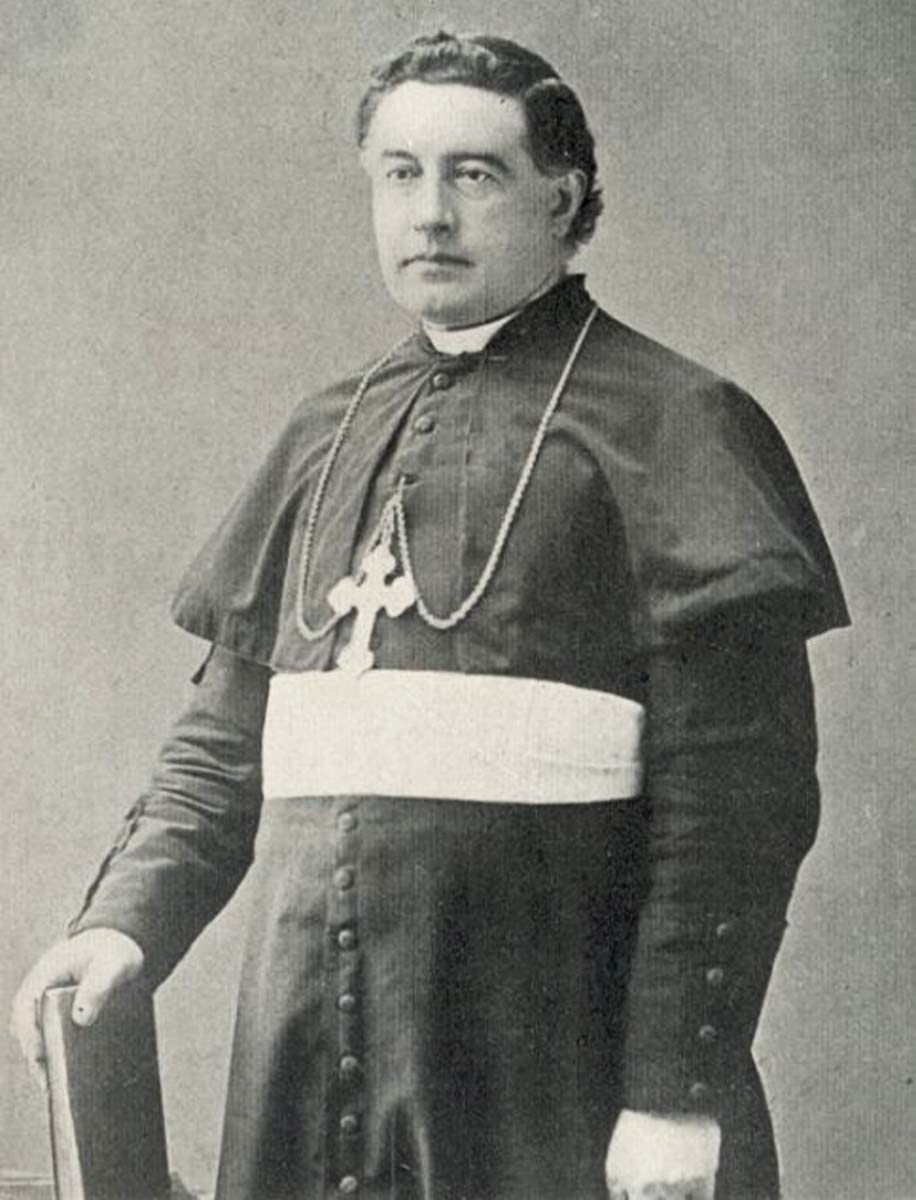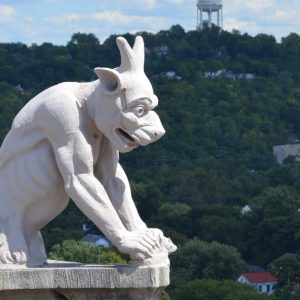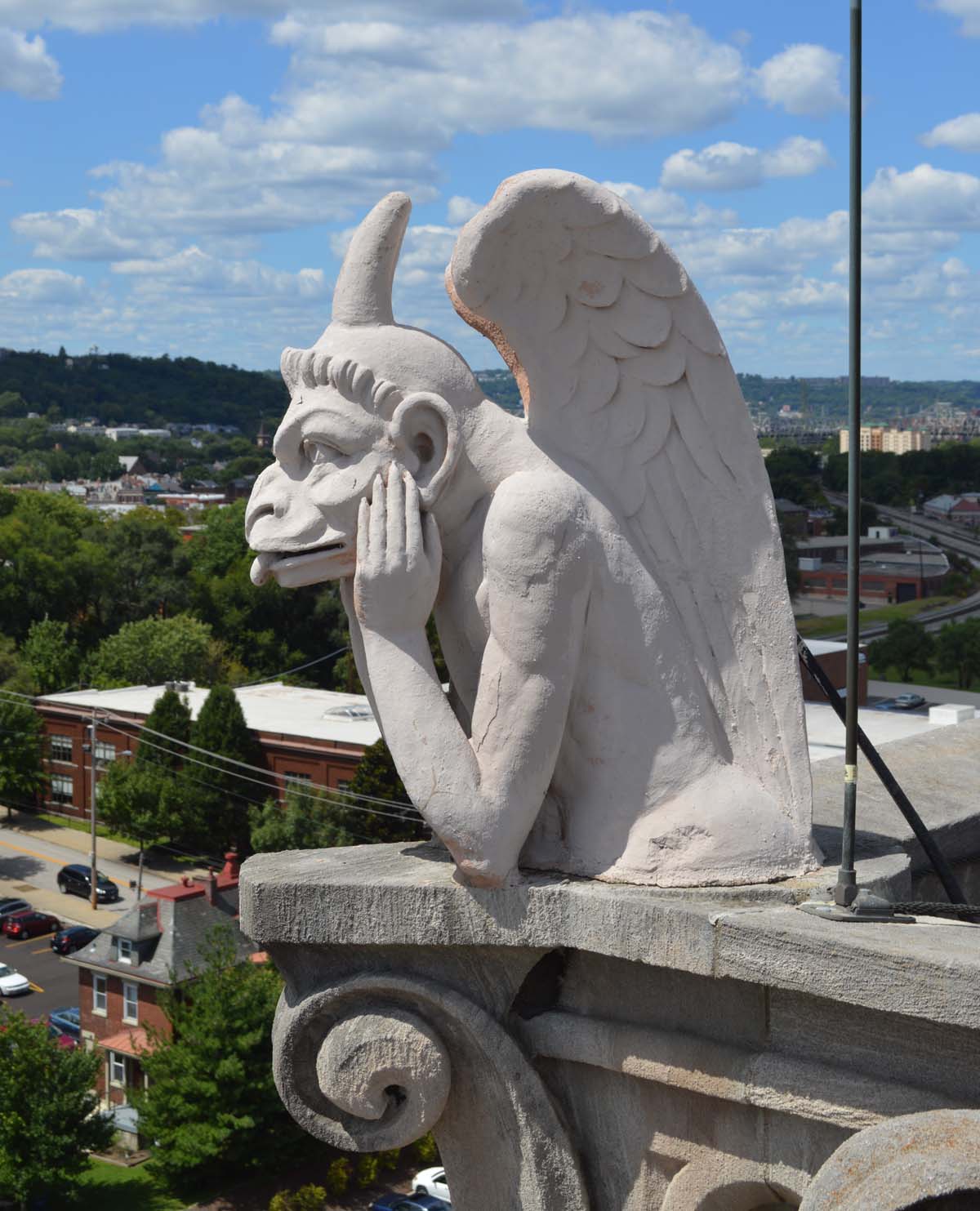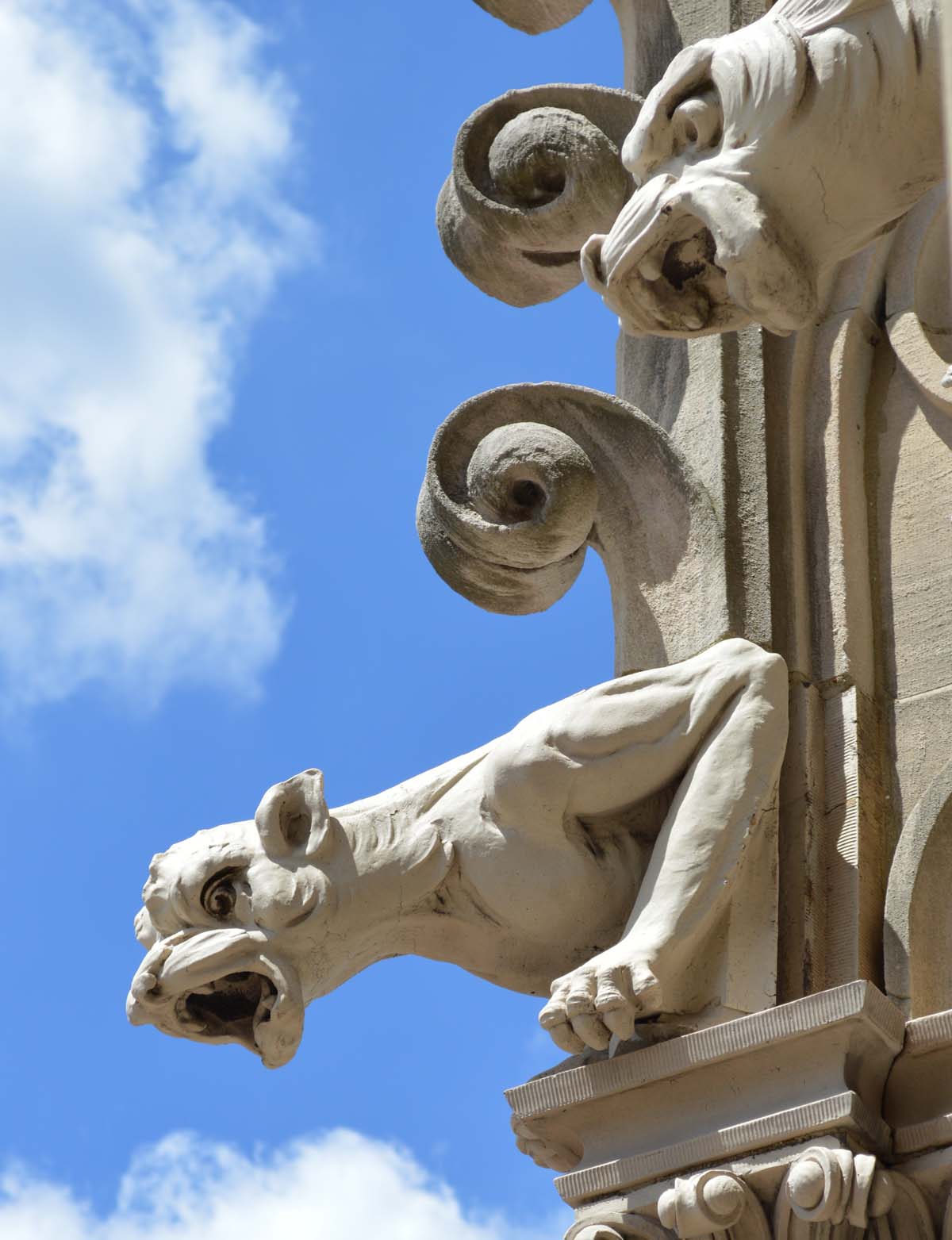
The chimeras have stood atop the Cathedral Basilica for 106 years. They were modeled after the original Notre Dame chimeras in Paris, France, created by French architect Eugène Viollet-le-Duc in 1843. (Photo by Nicolaus Enzweiler)
by Stephen Enzweiler
Special to NKyTribune
Chances are, if you’ve ever driven along Madison Avenue in Covington, you’ve seen them. Look up and there they are—perched high above the streets, looking down upon us mortal men. They are hideous, demonic-looking creatures, winged dragons, griffins and monsters that are half man, half beast. They are the gargoyles and chimeras that adorn the Cathedral Basilica of the Assumption, and they have been a presence there for more than a century.

Bishop Camillus Paul Maes (1846-1915) selected the gargoyles and chimeras for the new cathedral’s façade. Courtesy of the Archives, Catholic Diocese of Covington.
The story begins in 1843, when Viollet-le-Duc was first hired by the Paris Arts Commission to restore the facade of the 680-year old Notre Dame, which at the time was in a state of rapid decay. It would take him 19 years to complete his work, but when he finished it, he had produced from his own imagination what have become the most famous gargoyles and chimera sculptures in the world.
A half century later, Covington’s Belgian-born bishop, Camillus Paul Maes, would turn to Viollet-le-Duc’s fantastic creatures for inspiration in building the new St. Mary’s Cathedral. A native of Courtrai, West Flanders, Belgium, Maes was familiar with the Gothic style and understood its importance in Christian worship. As a youth, he once worked as a clerk in a civil engineer’s office and studied with a Courtrai architect before entering the seminary. So, when it came time to build the new St. Mary’s Cathedral in 1894, the confluence of Maes’ European upbringing and the Gothic Revival movement underway at the time in America fueled his decision to build in the French Gothic style.

The chimera “Horned Demon.” (Photo by Stephen Enzweiler)
The main body of St. Mary’s Cathedral was completed in 1901. Due to a lack of funds and the unavailability of the original architect, the building lacked a façade. In 1907, Maes hired local architect David Davis for the task, and construction began the following year. For its design, the bishop chose to construct an exact copy of the façade of Notre Dame Cathedral and to install 32 gargoyle and 26 chimera designs by Viollet-le-Duc.
David Davis contracted Carl Brothers of Covington to undertake the stone construction, and by 1910 the cathedral’s façade was finished. Upon its completion, Joseph Carl, on behalf of the Carl Brother’s firm, presented Bishop Maes with the completed gargoyles and rooftop chimeras.
For their creation, they had contracted Edward B. Johnston, a Bellevue native known as an “etcher and designer for architects and of fine memorials.” Johnston was born in 1857 in Plainville, Ohio and attended schools in the Cincinnati area. His artistic talents were noticed even as a boy, and he eventually attended the old Cincinnati Art Academy. His added interests as a prominent member of the Cincinnati branch of the American Folklore Society made him the obvious choice for the job.
In 1908, Johnston went to work copying Notre Dame’s sculptures. He cast them in a clay material called terra cotta, which was the preferred choice of material for the ever pragmatic and cost-conscious Bishop Maes. First, terra cotta was much cheaper to produce, weighed less than stone and would last for centuries. Terra cotta also allowed a sculptor to model extremely fine details that were otherwise not possible in stone.

Originally named “The Pensive Demon” by Viollett-le-Duc, it is more famously known as “Le Stryge” (“The Vampire”), so named by Paris artist Charles Meryon. (Photo by Stephen Enzweiler.)
Almost all of the chimera have names, taken from Viollet-le-Duc’s own notebooks. There is the “Hooded Raven,” the “Howling Demon” and “The Devourer.” The chimera “Le Stryge” (“The Vampire”) was made famous by artist Charles Meryon, who included an etching of it in his 1856 Paris exhibition. The results of Viollet-le-Duc’s designs have left us a not only a Gothic heritage that can be traced back to Paris, they help to make the Cathedral Basilica of the Assumption one of America’s great architectural treasures.
Tour groups and visitors to the Cathedral ask if these Gothic forms peering down at us are purely decorative or if they have some other meaning. Despite their long presence throughout history, what these tortured, grotesque figures actually represent is not fully understood. Most people believe they frighten away evil spirits. But scholars agree they are more likely visual reminders of our own human capacity for evil and depravity. Eugène Viollet-le-Duc’s own notebooks are full of references to his creations representing the evil he saw in human nature.
The tradition of using Gothic art as a teaching tool dates back to the medieval era, when most of the faithful were illiterate. Art and sculpture served as a kind of visual catechism to instruct them in the tenets of their Christian faith. Bishop Maes likely chose Viollett-le-Duc’s sculptures for the same purpose. They remind anyone who gazes up at them that good and evil often coexist beside each another, and that even alongside the Gothic beauty and splendor of this magnificent house of God, evil still lurks. By gazing upon these haunting figures, we may, in effect, be looking at ourselves.
Stephen Enzweiler is a writer and journalist. He has been a columnist for the Kentucky Enquirer, the Oxford Citizen, and was a senior editor at Y’all Magazine. He is the author of Oxford in the Civil War: Battle for a Vanquished Land (2010).

“Dragon.” (Photo by Stephen Enzweiler.)

“The Wandering Jew.” In Jewish mythology, this figure looks hopefully west toward the “presence of God.” (Photo by Nicolaus Enzweiler.)

Gargoyles growl at the passing traffic on Madison Avenue. (Photo by Stephen Enzweiler.)
























